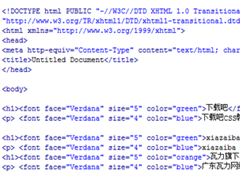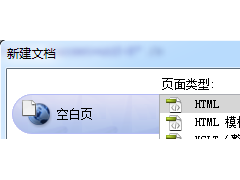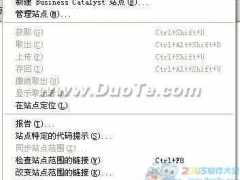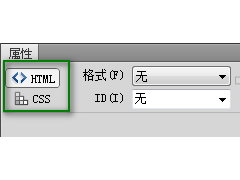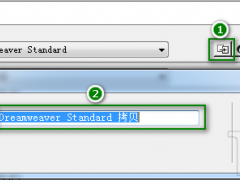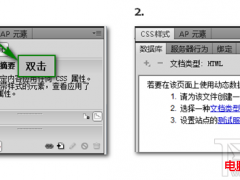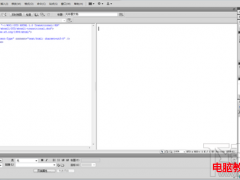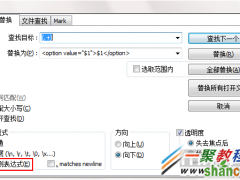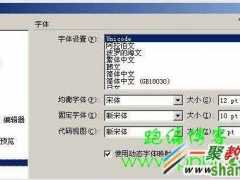本文实例讲述了C#创建IIS虚拟目录的方法。分享给大家供大家参考。具体分析如下:
DirectoryEntry是.Net给我们的一大礼物,他的名字我们就知道他的功能--目录入口。使用过ADSI的人都知道操作IIS,WinNT这些时,我们还需要提供他们的Path,操作IIS时,这个Path的格式为:
代码如下:
IIS://ComputerName/Service/Website/Directory
ComputerName:即操作的服务器的名字,可以是名字也可以是IP,经常用的就是localhost
Service:即操作的服务器,IIS中有Web,也有FTP,还有SMTP这些服务,我们主要是操作IIS的Web功能,因此此处就是"W3SVC",如果是FTP则应是"MSFTPSVC"
WebSite:一个IIS服务中可以包括很多的站点,这个就用于设置操作的站点。他的值是一个数字,默认是1,表示缺省站点,如果有其它,则从1开始依次类推。
Directory:不用说,即操作的目录名称,一个站点一般顶层目录为"ROOT",其它目录则是他的孩子(Child)。
首先我们获取一个站点的顶层目录(根目录):
代码如下:
DirectoryEntry rootfolder = new DirectoryEntry("IIS://localhost/W3SVC/1/ROOT");
如果我们创建这个对象是没有发生异常,则表示这个目录是真实存在的。
下面我们来添加新的虚拟目录,比如我们要加的是"Aspcn":
?
1 2 3 4 DirectoryEntry newVirDir = rootfolder.Children.Add("Aspcn","IIsWebVirtualDir"); newVirDir.Invoke("AppCreate",true); newVirDir.CommitChanges(); rootfolder.CommitChanges();创建目录的思路很简单,即在根目录的子集(rootfolder.Children)中再添加一条记录,这里使用的是DirectoryEntries类中的Add方法,它返回的是一个DirectoryEntry,表示新加入的目录,第一个参数是虚拟目录的名字,第二个则是Schema的类名以表明我们加入的目录类型。然后再使用DirectoryEntry的Invoke方法,调用ADSI中的"AppCreate"方法将目录真正创建(似乎不走这一步也可以创建目录成功,但是为了保险起见,大家还是用吧),最后便是依次调用新、根目录的CommitChanges方法,确认此次操作。
在创建新目录时,我们也可以同时给这个目录的属性赋值,但是我的实战经验告诉我,最好不要这样做,如果创建时就赋值,将有很多属性不能赋值成功,比如重要的表示真实目录的Path属性。因此飞刀建议大家最好是先创建目录,然后再赋值,即更新目录信息。
更新虚拟目录
相信大家对IIS都比较熟悉,了解IIS中一些重要的设置,如可读(AccessRead)、可写(AccessWrite)、可执行(AccessExecute)等。这些都可通过对DirectoryEntry的Properties属性集合的赋值来实现。赋值可以通过两种方式来完成:
第一种是调用Properties集合的Add方法,如:
代码如下:
dir.Properties["AccessRead"].Add(true);
第二种是对第一个索引值赋值:
代码如下:
dir.Properties["AccessRead"][0] = true;
这两种方法都是可行的。具体是要看你的喜好了。
在进行赋值之前我们还是要确定要要赋值的目标吧:)这里我们使用DirectoryEntries类的Find方法,如:
代码如下:
DirectoryEntry de = rootfolder.Children.Find("Aspcn","IIsVirtualDir");
找到了,我们就可以赋值了。赋值时一定要好好看看啊,虚拟目录的属性值可以超多,一查一大堆。。:(太多了,飞刀我也不重复了,大家去微软的站点上查:)
比较常用的有:
AccessRead,AccessWrite,AccessExecute,Accessscript,DefaultDoc,EnableDefaultDoc,Path
删除虚拟目录
删除虚拟目录的方法也很简单,就是找到你要删除的虚拟目录,然后调用AppDelete方法。
?
1 2 3 DirectoryEntry de = rootfolder.Children.Find("Aspcn","IIsVirtualDir"); de.Invoke("AppDelete",true); rootfolder.CommitChanges();还有一种方法,就是调用Root目录的Delete方法。
?
1 2 3 4 5 6 object[] paras = new object[2]; paras[0] = "IIsWebVirtualDir"; //表示操作的是虚拟目录 paras[1] = "Aspcn"; rootfolder.Invoke("Delete",paras); rootfolder.CommitChanges(); System.DirectoryServices.DirectoryEntriesIIs创建虚拟目录
?
1 2 3 4 5 6 7 8 9 10 11 12 13 14 15 16 17 18 19 20 21 22 23 24 25 26 27 28 29 30 31 32 33 34 35 36 37 38 39 40 41 42 43 44 45 46 47 48 49 50 51 52 53 54 55 56 57 58 59 60 61 62 63 64 65 66 67 68 69 70 71 72 73 74 75 76 77 78 79 80 81 82 83 84 85 86 87 88 89 90 91 92 93 94 95 96 97 98 99 100 101 102 103 104 105 106 107 108 109 110 111 112 113 114 115 116 117 118 119 120 121 122 123 124 125 126 127 128 129 130 131 132 133 134 135 136 137 138 139 140 141 142 143 144 145 146 147 148 149 150 151 152 153 154 155 156 157 158 159 using System; using System.Collections.Generic; using System.Text; using System.DirectoryServices; namespace Install_IIS { class IISManager { public IISManager() { } /// <summary> /// 创建虚拟目录 /// </summary> /// <param name="WebSite">服务器站点名称</param> /// <param name="VDirName">虚拟目录名称</param> /// <param name="Path"></param> /// <param name="RootDir"></param> /// <param name="chkRead"></param> /// <param name="chkWrite"></param> /// <param name="chkExecute"></param> /// <param name="chkscript"></param> /// <param name="chkAuth"></param> /// <param name="webSiteNum">1</param> /// <param name="serverName">localhost</param> /// <returns></returns> public string CreateVDir(string WebSite,string VDirName, string Path, bool RootDir, bool chkRead,bool chkWrite, bool chkExecute, bool chkscript, bool chkAuth, int webSiteNum, string serverName) { string sRet=String.Empty; System.DirectoryServices.DirectoryEntry IISSchema; System.DirectoryServices.DirectoryEntry IISAdmin; System.DirectoryServices.DirectoryEntry VDir; bool IISUnderNT; // // 确定IIS版本 // IISSchema = new System.DirectoryServices.DirectoryEntry("IIS://" + serverName + "/Schema/AppIsolated"); if(IISSchema.Properties["Syntax"].Value.ToString().ToUpper()=="BOOLEAN") IISUnderNT=true; else IISUnderNT=false; IISSchema.Dispose(); // // Get the admin object // 获得管理权限 // IISAdmin=new System.DirectoryServices.DirectoryEntry("IIS://" +serverName +"/W3SVC/" + webSiteNum + "/Root"); if (IISAdmin == null) return "IIS 未正常安装"; if (IISAdmin.Children == null) return "IIS 可能未启动"; // // If we're not creating a root directory // 如果我们不能创建一个根目录 // if (!RootDir) { // // If the virtual directory already exists then delete it // 如果虚拟目录已经存在则删除 // foreach(System.DirectoryServices.DirectoryEntry v in IISAdmin.Children) { if (v.Name == VDirName) { // Delete the specified virtual directory if it already exists try { IISAdmin.Invoke("Delete", new string [] { v.SchemaClassName, VDirName }); IISAdmin.CommitChanges(); } catch(Exception ex) { sRet+=ex.Message; } } } } // // Create the virtual directory // 创建一个虚拟目录 // if (!RootDir) { VDir = IISAdmin.Children.Add(VDirName, "IIsWebVirtualDir"); } else { VDir = IISAdmin; } // // Make it a web application // 创建一个web应用 // VDir.Properties["Path"][0] = Path; //设置虚拟目录指向的物理路径 if (IISUnderNT) { VDir.Invoke("AppCreate", false); } else { VDir.Invoke("AppCreate", 1); } // // Setup the VDir // 设置虚拟目录 // VDir.Properties["AccessRead"][0] = chkRead; //设置读取权限 VDir.Properties["AccessExecute"][0] = chkExecute; //设置执行权限 VDir.Properties["AccessWrite"][0] = chkWrite; //设置写入权限 VDir.Properties["Accessscript"][0] = chkscript; //执行权限 VDir.Properties["DefaultDoc"][0] = "index.asp,Default.aspx";//设置默认文档,多值情况下中间用逗号分割 VDir.Properties["AppFriendlyName"][0] = VDirName; //应用程序名称 VDir.Properties["AuthFlags"][0] = 0; // 设置目录的安全性,0表示不允许匿名访问,1为允许,3为基本身份验证,7为windows继承身份验证 VDir.Properties["AuthNTLM"][0] = chkAuth; VDir.Properties["EnableDefaultDoc"][0] = true; VDir.Properties["EnableDirBrowsing"][0] = false; // // NT doesn't support this property // NT格式不支持这特性 // if (!IISUnderNT) { VDir.Properties["AspEnableParentPaths"][0] = true; } // // Set the changes // 设置改变 // VDir.CommitChanges(); //下面的方法是得到所有属性名称的方法: foreach (PropertyValueCollection pvc in VDir.Properties) { Console.WriteLine(pvc.PropertyName); } sRet+= "VRoot " +VDirName + " created!"; return sRet; } #region Properties public string ServerName { get { return _serverName; } set { _serverName = value; } } #endregion public static string VirDirSchemaName = "IIsWebVirtualDir"; #region Private Members private string _serverName; #endregion } }测试用:
代码如下:
MessageBox.Show(new IISManager().CreateVDir("localhost", "ietm", "c:myweb", false, true, false, false, true, false, 1, "localhost"));
这个我已投入项目中使用,可放心使用。
希望本文所述对大家的C#程序设计有所帮助。




